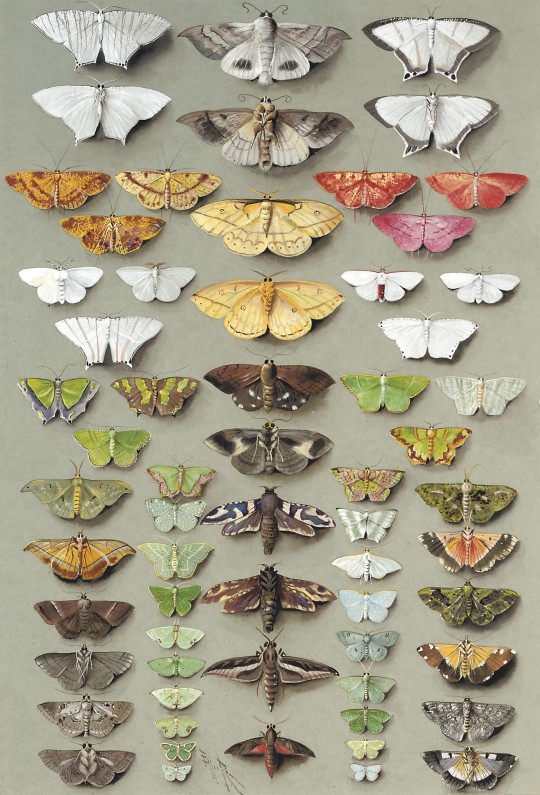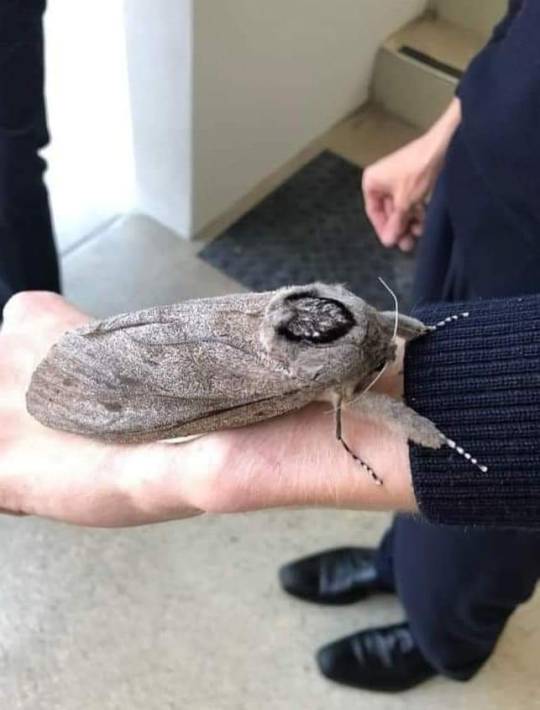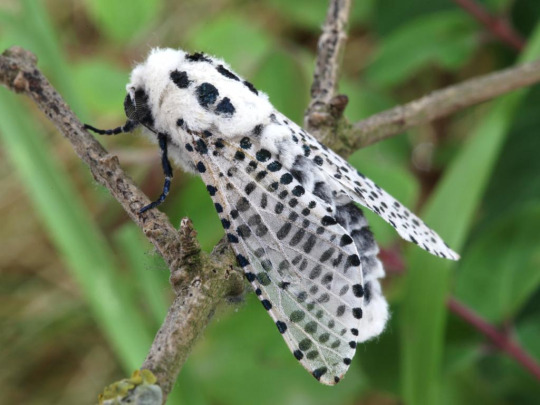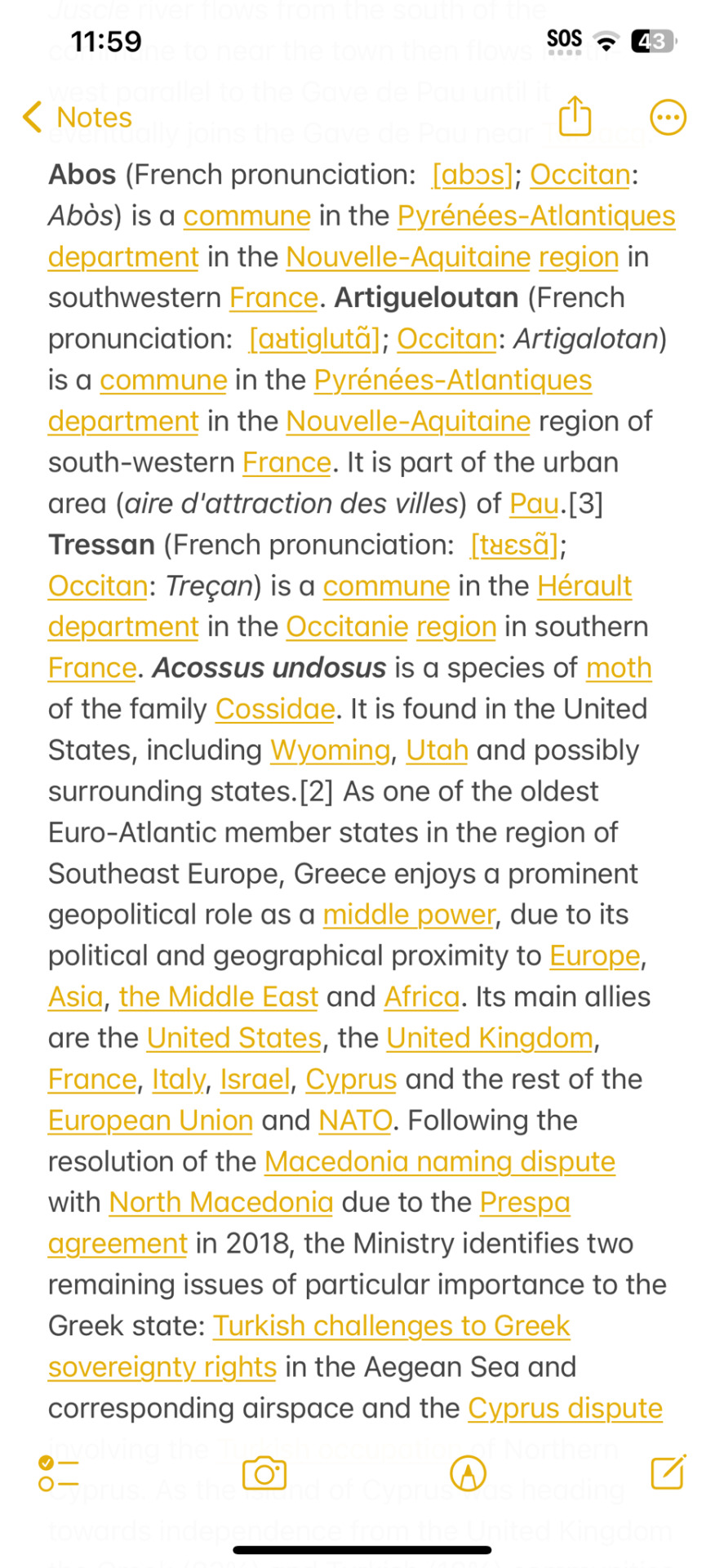#cossidae moth
Explore tagged Tumblr posts
Text
Moth Of The Day #225
Reed Leopard Moth / Giant Borer
Phragmataecia castaneae
From the cossidae family. They have a wingspan of 27-50 mm. They inhabit fens, marshes and pond margins. They can be found in most of Europe and Asia.


Image sources: [1] [2]
#moth#moths#lepidopterology#lepidoptera#nature#pretty moth#insect#bugs#moth of the day#motd#lepidoptery#entomology#bugblr#bug#insects#invertebrates#reed leopard moth#giant borer moth#phragmataecia castaneae#cossidae moth#cossidae
272 notes
·
View notes
Text
@amultitudeofsins submitted: Please tell me what this beautiful guy is, he was like the length of my thumb. East Texas

Lovely dude! It's a carpenterworm moth :)
111 notes
·
View notes
Text




This moth's black spots are shining to blue and cyan when reflect some light! it's so beautiful ◕.◕☆
알락굴벌레나방 (Zeuzera multistrigata)
#photographers on tumblr#my photography#original photographers#art#lensblr#photography#animal photography#insect photography#wildlife photography#macro photography#nature photography#flash photography#night photoshoot#nature#wildlife#naturecore#insect#moth#leopard moth#cossidae#bug#bugblr#entomology#spotted#fairy#moth post#fairycore#august 1 2024#no to generative ai
17 notes
·
View notes
Text
Found this special girl on our morning walk today:




They're called Blausieb in german, the latin name is Zeuzera pyrina.
They're not rare but this is the first time I saw one in person.
4 notes
·
View notes
Photo

Marian Ellis Rowan (1848-1922, Australian) ~ Sixty-three moths, arranged in three or five irregular columns, with representatives of the family NOCTUIDAE (e.g. 14-17, 28,29, 32,33), GEOMETRIDAE (e.g. emerald moths, subfamily GEOMETRINAE, 9-11, 18-24, 46-50, 52-57; other geometrids include 1-5, 8, 38-45), a hook tip (family DREPANIDAE 12,13), two hawk moths (family SPHINGIDAE 36, 37), a goat moth (family COSSIDAE 34,35), and a pyralid (family PYRALIDAE 51) Watercolour with bodycolour on grey paper
[Source: Christie’s]
2K notes
·
View notes
Text

Endoxyla cinereus,the giant wood moth,is a moth of the family Cossidae and lives in Australia and New Zealand.
The species was first described in 1890,is the largest moth in the world,weighs 30 grams and is wingspan measures 23 centimeters.
162 notes
·
View notes
Text

Wood Leopard Moth - Zeuzera pyrina
With numerous spots lining its scaled wings and its furry thorax, it's no wonder that this insect is commonly known as a Leopard Moth. While this specie is purely white-coated, other species with the Zeuzera genus that have more sandy-yellow coloration around the borders of the wings and thoracic hairs, further lending a resemblance to their namesake animal. A coat like this would look beautiful on a leucistic big cat, and it certainly allows this Moth to stand out against other similar-looking species belonging to different families. To be sure you've found one of these Moths in North America (today's specimen was photographed in Europe), take your time while examining your find. While there's no chance that one could confuse this Leopard Moth for something like a white Ermine Moth (whose spots are much smaller), there's always the possibility that you've found a Giant Leopard Moth (Hypercompe spp. which aren't actually Leopard Moths). Specifically, Hypercompe Moths commonly display spotted wings, but many of the spots along the wings are distinctively large and hollow. This should be a big help should you find a similar Moth in your garden - this specie originally called Eurasia home and was introduced to North America - but there are other key identification markers to look for.
Try and obtain a glimpse of the abdomen while your mystery Moth is at rest. Wood Leopard Moths have a black abdomen with white plumage while Hypercompe Moths have a abdomen of dark-blue with yellow/orange banding. You can actually see a bit of the former abdomen poking out from behind the wings. Furthermore, the legs of Hypercompe Moths have distinct patches of white (look to the femur and tibia), while true Leopard Moth legs are all black. Finally, the Hypercompe Moths are actually Tiger Moths (sorted into the family Erebidae) while the Wood Leopard belongs to the family Cossidae (Carpenter Moths). This may be a lot of information to take in at once, but Moth identification from just a picture can be very tricky, so you'll need the best angles and all the information you can capture to determine which Moth has visited you today/tonight. For today, this specimen is a male...as you could probably guess from the feathered antennae which pick up the alluring pheromones of female Moths (which lack the combs). Interestingly, this specie has only partially feathered antennae, with the rest of the antenna being serrated. It could be that this allows the antenna tips to function better as "feelers", but it could also be that the Moth simply doesn't need so many combs to sense pheromones. Whatever the answer, it certainly gives this specie a unique look.
This picture was taken on June 8, 2024 in Romania by a dear friend of the family. Thank you.
#jonny’s insect catalogue#insect#moth#wood leopard moth#leopard moth#carpenter moth#goat moth#lepidoptera#romania#june2024#2024#nature#entomology#invertebrates#arthropods#photography#animals
8 notes
·
View notes
Text



Morpheis pyracmon, is a moth in the family Cossidae. It was described by Pieter Cramer in 1780. It is found in Suriname, Venezuela, Ecuador and Peru. The habitat consists of cloudforests, where it is found at altitudes between 400 and 1,200 meters.
Found dead in my apartment courtyard, I'm located in Los Teques, Miranda, Venezuela.
6 notes
·
View notes
Text

Marian Ellis Rowan (1848-1922) Sixty-three moths, arranged in three or five irregular columns, with representatives of the family NOCTUIDAE (e.g. 14-17, 28,29, 32,33), GEOMETRIDAE (e.g. emerald moths, subfamily GEOMETRINAE, 9-11, 18-24, 46-50, 52-57; other geometrids include 1-5, 8, 38-45), a hook tip (family DREPANIDAE 12,13), two hawk moths (family SPHINGIDAE 36, 37), a goat moth (family COSSIDAE 34,35), and a pyralid (family PYRALIDAE 51) Watercolor with bodycolor on green paper
8 notes
·
View notes
Text


Large Pupa for a Large Moth
If you want an idea of how big these moths can get, look at this observation. Sadly I've never come across one the adult moths myself.
Unidentified, family Cossidae
20/03/23
#Cossidae#unidentified#Lepidoptera#pupa#pupae#lepidopterology#invertblr#invertebrates#Arthropods#Arthropoda#bugs#bugblr#bugs tw#insects#insects tw#insecta#insectblr#entomology
6 notes
·
View notes
Note
could you do wood leopard moth(zeuzera pyrina) ?
Moth Of The Day #128
Wood Leopard Moth / Leopard Moth
Zeuzera pyrina
From the cossidae family. They have a wingspan of 35-70 mm. They tend to inhabit gardens, woodland and orchards. They can be found primarily in Europe, but are also found in certain areas of northern Africa and Asia.


#moth#moths#lepidopterology#lepidoptera#pretty moth#nature#insect#bugs#moth of the day#motd#bug#insects#bugblr#lepidoptery#cossidae#cossidae moth#wood leopard moth#leopard moth
332 notes
·
View notes
Text



@ragons submitted: I found this lovely moth in [removed] (please remove) and im a little stumped on who she is. My guess is rustic sphinx moth because of the colors but she doesn't hold her wings like normal sphinx moths? Thank you!
You are correct in that she does not quite look like a sphinx because she's not one! She's a carpenterworm moth, Prionoxystus robiniae, in the family Cossidae.
125 notes
·
View notes
Link
1 note
·
View note
Text

Abos (French pronunciation: [abos]; Occitan:
Abòs) is a commune in the Pyrénées-Atlantiques department in the Nouvelle-Aquitaine region in southwestern France. Artigueloutan (French pronunciation: [artigluta]; Occitan: Artigalotan) is a commune in the Pyrénées-Atlantiques department in the Nouvelle-Aquitaine region of south-western France. It is part of the urban area (aire d'attraction des villes) of Pau. [3] Tressan (French pronunciation: [tassal;
Occitan: Treçan) is a commune in the Hérault department in the Occitanie region in southern France. Acossus undosus is a species of moth of the family Cossidae. It is found in the United States, including Wyoming, Utah and possibly surrounding states. [2] As one of the oldest Euro-Atlantic member states in the region of Southeast Europe, Greece enjoys a prominent geopolitical role as a middle power, due to its political and geographical proximity to Europe, Asia, the Middle East and Africa. Its main allies are the United States, the United Kingdom, France, Italy, Israel, Cyprus and the rest of the European Union and NATO. Following the resolution of the Macedonia naming dispute with North Macedonia due to the Prespa agreement in 2018, the Ministry identifies two remaining issues of particular importance to the Greek state: Turkish challenges to Greek sovereignty rights in the Aegean Sea and corresponding airspace and the Cyprus disputes CLONES
1 note
·
View note
Text


Bug of the Day
This moth was so huge, I saw it on the other side of the sheet and took a photo of the shadow.
(Prionoxystus robiniae - Cossidae - carpenterworm moth)
#Prionoxystus robiniae#Prionoxystus#carpenterworm moth#Cossidae#Lepidoptera#entomology#insect#bigboi
129 notes
·
View notes
Photo


Carpenterworm Moth! Yay! I love the salt and pepper markings. It reminds me of when you sprinkle salt on watercolor before it dries.
44 notes
·
View notes